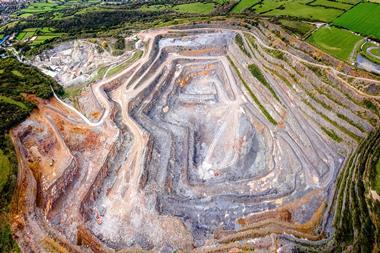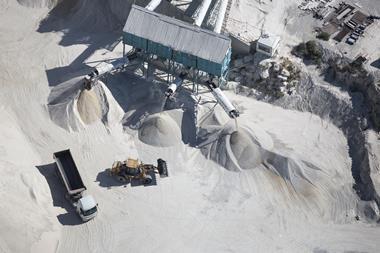Do you flush and forget? Time to make a stink about concrete’s emissions

This month’s feature articles look at two topics that arguably don’t get the love or attention they deserve when you consider their importance in today’s world: sewage treatment and concrete. Both are pretty much indispensable to our lives, and both are in great demand in less-developed countries. It’s easy to be sniffy about sewage if you just flush and forget, but 60% of the world’s population – 4.5 billion people – live without access to proper toilets, and that’s a huge public health problem.
You could argue that sewage is a fixed problem – less-developed countries can just copy how more-developed places do it. But is our own system so perfect that it can’t be improved upon? Probably not; there’s still space for innovation in our sewage and wastewater treatment plants, as our feature on page 62 explores.
You could argue that sewage is a fixed problem – less-developed countries can just copy how more-developed places do it. But is our own system so perfect that it can’t be improved upon? Probably not; there’s still space for innovation in our sewage and wastewater treatment plants, as Hayley Bennett’s feature explores.
In the past of course, the contents of people’s chamber pots were recycled to a certain extent: ‘nightsoil’ was used as fertiliser and urine had uses from leather tanning to making gunpowder. It’s clear from the feature that a more modern version of such recycling is possible. Plant nutrients such as phosphorus and nitrogen can be extracted, cellulose fibres (from flushed toilet paper) obtained for a variety of uses and even precious metals can be removed. It remains to be seen what the appetite among consumers is for some of these products, but turning the cellulose into bicycle paths is hardly going to turn anyone’s stomach.
Almost as unpalatable to some people’s eyes is the ubiquitous building material concrete. As much as I’d like to get into a debate about the aesthetic merits (or otherwise) of concrete or brutalist architecture, there’s a more pressing problem with the material. Its carbon footprint is massive.
As our feature on page 58 emphasises, there’s no easy answer to this; in addition to the emissions from mining, transporting and processing the ingredients, the very nature of breaking down calcium carbonate to produce cement frees carbon dioxide. That’s around half the problem.
As Angeli Mehta emphasises in her feature, there’s no easy answer to this; in addition to the emissions from mining, transporting and processing the ingredients, the very nature of breaking down calcium carbonate to produce cement frees carbon dioxide. That’s around half the problem.
Progress has already been made – the world’s largest cement producer has cut its emissions by nearly 20% since 1990 – but every part of the process will need to be examined and improved to stop concrete being such a problem. The research discussed in the feature ranges from the low-tech (carrots) to the highest (graphene), but as demand for concrete is unlikely to diminish, or even slow, as less-developed countries build better infrastructure, every avenue must be explored to help tame its emissions.

















No comments yet